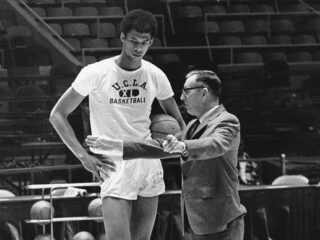Determinants of a successful brand – consumer relationship.
In my previous article, the changing nature of sports I concluded that sports is not only about winning.
They need to act as a brand, or even better, a technology-driven, innovative start-up. Scratching the surface I wanted to now deep-dive into the determinants of a successful brand – consumer relationship.
Brand Equity
Kotler (2002) defined brand equity as “the extent to which it has a high brand loyalty, name awareness, perceived quality, strong brand associations and other assets such as trademarks”. This can be achieved through association with other brands, people, places or things. Previous research on key indicators of brand equity influences focused primarily on cognitive and functional aspects, eg. the product (game), quality and sportscape. However, recent studies into affective, emotional and subconscious features of brands have suggested these might be even more influential than cognitive aspects. One study investigated how positive cognitive experiences can counteract negative affective experiences, suggesting that affective aspects (values, opinions, emotions etc.) are fundamental in building equity. Similarly a study on Football Club Barcelona (FCB) examined how it has strategically built brand equity through prioritizing both cognitive and affective aspects. They credit political stance (Catalan nationalism), altruistic image (sponsoring UNICEF), position in the Spanish La Liga, their famous stadium, and world-renowned players with giving them strong brand values. This study emphasizes the relevance of Keller’s (2001) Customer-Based Brand Equity Model[1], which views both functional and feeling dimensions working in tandem. The product ultimately influences brand judgment, product feelings influence brand feelings and so forth. There are over 1,300 global registered FCB fan clubs, which are influenced by cognitive or emotional factors. Capitalizing on both dimensions allows clubs transcend to high levels of brand resonance (Cortsen, 2014). Other studies, however, emphasize a need for further investigation. The above highlights how high levels of brand awareness can increase the probability of consumer loyalty and brand choice.
Appendix 1
Branding in a sporting context
The unpredictable nature of sports makes this a unique product whereby consumer emotions are highest whilst the product is being consumed. Ultimately, the consumer’s emotions – if managed correctly – can increase attachment, create a sense of identity, leading to club/brand. In other words, building a “positive attitude with reciprocity” (Mullin et al.2000, p.73) will give clubs a competitive advantage over other clubs – and also over other forms of the leisure industry. It has been identified that marketplace characteristics as essential factors that instil a positive customer-brand based relationship; the history, tradition, group experience, ritual and location are what defines costumers social identification with the club, thus leading to an emotional connection. Watkins (2014) study reinforced the Social Identity-Brand Equity (SIBE) model[2] by providing empirical evidence that social identification, most noticeably in the form of individual and community experience, is a strong predictor of brand equity. It is a long-term, emotional and internalized view of customer-brand relationships that become part of the customer’s everyday life. This is often overlooked for short-term commercial growth, yet is quintessential.
Appendix 2
Further studies have based customer-brand relationship and loyalty on more than just psychology[3] (Funk et al.,2013). Psychological processes are represented through four levels of strengthening attitudes towards the club – awareness, attraction, attachment and allegiance. The process can be influenced through a club’s level of engagement with the customers; however, countering this the product being consumed (i.e. type of sport) is an important factor in determining the depth of relationship. The level of interest in the product will define the level of customer allegiance. Customers may love the sports, yet not identify with any one team – league dominance. On the other hand, spectators may identify more strongly with a team than the actual sport – team dominance. Personal views on the consumed product are a tangible determinant that the club has little control over; it would be a waste of resources for clubs to devise a relationship with some customer segmentations. Yet, knowledge of these segmentations gives an overview of the mind-sets of costumers, helping us devise long-term strategies that address both tangible and intangible variables.
Appendix 3
Possibly, branding and sporting success are increasingly entwined – clubs must see some sporting success in order to increase brand equity (Cortsen, 2014). FC Bayern Munich’s treble win gave them a reputation as the ‘best European club of 2013’(Cortsen, 2014). In consideration with the Brand Equity Assessment Framework, their product, organization and market-related antecedents all lead to increased brand equity, which consequently provides them with the stated marketplace perception. The newly-formed franchise between Manchester City FC(MCFC) and the New York Yankees-New York Football Club (NYCFC)-will not enter Major League Soccer until 2015. Despite never having played a competitive match, they are an established brand with high equity, sales and perception. Their current antecedents are purely based on consumer ties with MCFC and the New York Yankees.
It can be summarised that the process of leveraging brand equity can be done through a three stage framework;
(1) Defining the club identity
(2) market positioning of the club and
(3) developing brand strategy.
This means sporting success is a constraint variable that can prevent brand leverage…. As in the case of MCFC, it can be strategically be manipulated.
However, this variable can alternate between countries. Although interlinked, the framework suggests that the brand identity, positioning and strategy of the club are on par with sporting success (Neils,2012). No research investigates whether consumers V. Clubs perception of this statement is true; do consumers see success as a determinant in their loyalty to a club and do clubs view success as essential for solid brand equity or is it something that can be manipulated using other variables?
Message me for the full reference list :)




